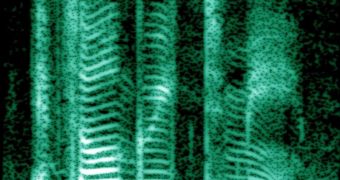Over millions of years, our species has developed an increasingly complex vocal apparatus, which has now placed us at the top, in terms of speech performance. While most higher mammals have the ability to produce sounds, such as roars and pearls, using their vocal chords, none of them is capable of generating articulated words, like we are. A team of scientists recently set on a path to determine the traits that allow us to do so, in an investigation effort that is to clear the last mysteries surrounding human voices, the BBC News reports.
Experts at the University College London (UCL) Institute of Cognitive Neuroscience are undertaking this effort for the Vox Project, managed by BBC Radio 4. The scientists want to gain a deeper insight into how the human voice works, and also on how speech interacts with the brain. They are amazed by the enormous amount of data our individual voices give about ourselves. For instance, when talking with someone on the phone, we can usually figure out if our conversation partner is male or female, their approximate age, their mood, and even their place of birth, in some cases.
The “tools” that make our type of speech possible are membranes in our windpipe, which are called vocal folds. These structures are being vibrated by a finely controlled stream of air coming from our lungs, which generate certain frequencies when passed through the folds. These vibrations cause a buzzing sound, which is then perceived as our individual voices. Men and women have folds of different sizes, and therefore men can produce lower-pitched speech that covers a wider range than the higher-pitched, narrower speech of women.
Previous researches have also demonstrated that we tend to change our voice slightly when talking to different people. While we are aware of this most of the times, there are instances when we don't even realize this is happening. Social settings and conversation partners apparently affect our voices just as much as feelings such as love, hate and anger do. In addition to these elements, perhaps the most important factors are lips, tongues, jaw and soft palate. Their motions, and the particular patterns in which each user moves them, is crucial to the pitch and timber of our individual voices.

 14 DAY TRIAL //
14 DAY TRIAL //